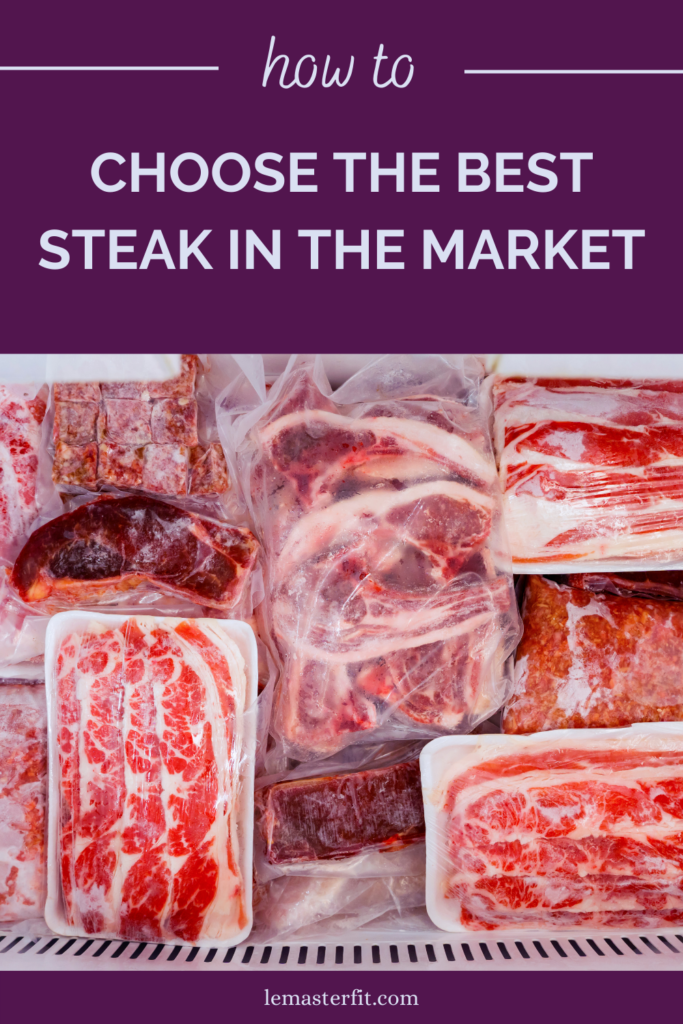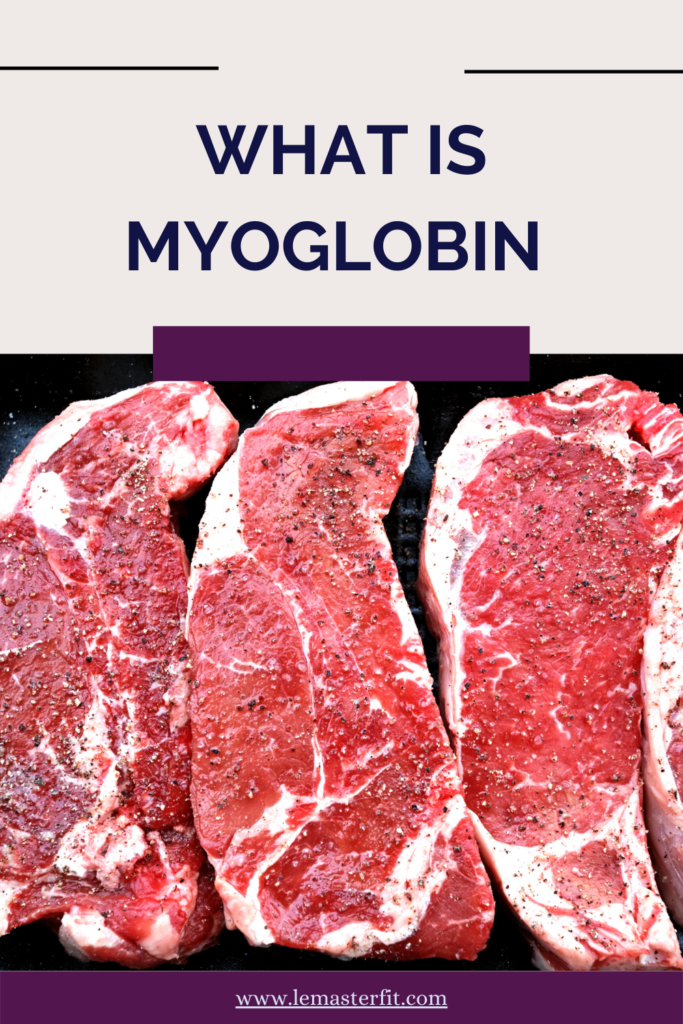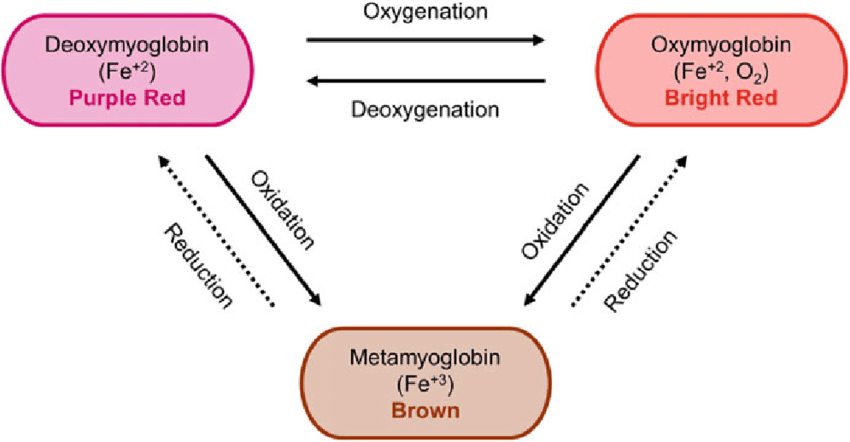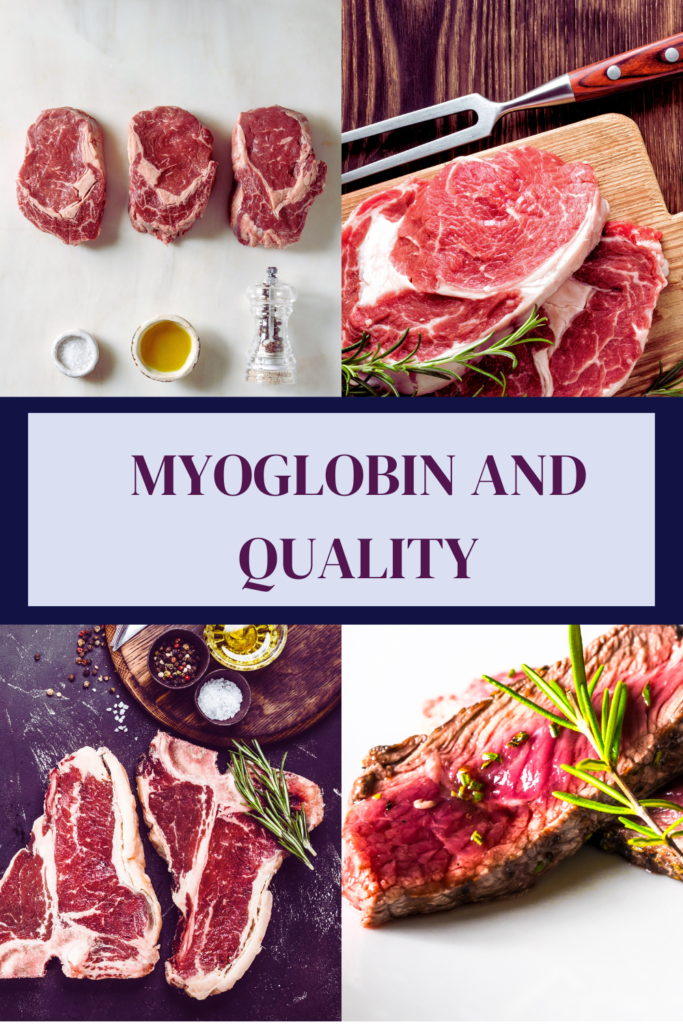
What is myoglobin – 1000 foot view
Have you ever been in a grocery store, trying to shop for your dinner, and you pick up a steak? You look at the steak and, as we in the food science community acknowledge, you “eat with your eyes”. When I look for steak, I want a steak that is bright cherry red. Meat colour is driven by a reaction with myoglobin. Hopefully you want to know: what is myoglobin?
This means that you look at the steak and decide if it looks delicious. When it comes to food I think that lesson “don’t judge a book by its cover” disappears.
As for me, when it comes to steak, I take my time judging all of them! No joke, there was actually a time when I spent 30 minutes scrutinizing different steaks and briskets.
What is the red juice in meat?
One thing that deters a lot of people though is picking up a Ribeye, pork chop, or chicken breast and see it sitting in a bit of juice. You think to yourself – what is the juice in the meat package?
I have heard countless times people thinking that it is blood. When you see that, do you ask yourself “ is it blood” What is the red juice?” You are not alone. I want to put your mind at ease and assure you the juice is not blood.

Composition of meat
As you may know, meat and muscle are made of sereval components that impact quality, eating experience, and cooking ability. The major component in meat is, of course, protein.
On a biochemical level, different proteins take different forms due to the wide variation of protein function.
What is myoglobin?
Myoglobin is a protein in meat that supplies oxygen to muscles. For meat, myoglobin is also responsible for the colour in muscle. The centre of myoglobin is Iron which can interact with oxygen and water. Depending on which (water or oxygen) is around, the colour will change.
Myoglobin, or the iron present, goes through cycles of oxygenation, oxidation, deoxygenation, and reduction – all yield different colours in meat.

When you look at steaks in the grocery store, sometimes they are packaged using a vacuum package, which removes the oxygen. This causes myoglobin o bind to water and changes the colour of the steak to a dark red/purple. Steaks packaged in over wrapped trays or a butcher cabinet, they look bright cherry red. That’s because oxygen and iron interact to produce a cherry red colour in beef steaks, which often indicates freshness. This takes place via a chemical reaction. Now, one issue with this “open” packaging, is that if steaks become oversaturated with oxygen, the reaction to keep the muscle bright cherry red depletes. This causes the steak to look brown. Supermarkets know that brown steaks don’t look appetising, and they reduce the cost! Its great for PhD students to save a few bucks at the supermarket each week!
Okay – so what’s the liquid in the package?
Great question. Time and time again, I hear people say that the red juice in the meat packages is blood. This is not true! When an animal is harvested, the blood is removed to less than 10% throughout the whole carcass. Blood coagulates however, the red juice in the steak packages is watery.
When the fibres in the steak shrink (a natural process post-mortem) some water is pushed out of the steak and settles at the bottom of the package. The reason the red juice in meat packages is pinking red is because of our good friend myoglobin. Myoglobin has a high affinity for water (ie it is water soluble). That means that, as some of the water moves from the steak to the package, it brings some of the myoglobin, making the juice pink.
What is the significance of too much red juice in the packages?
This juice is important to indicate and estimate eating quality for consumers. In the food industry, we call this red juice purge. Purge is important for meat quality because, as water is expelled from steaks, there is less water in the steak. Water within meat is important to help maintain juiciness and tenderness. Think about it this way: water is not tough; you don’t need to chew through it. When the steak is poor quality. The muscle fibres cannot retain water within the muscle. There is less water in the steak and more is lost during cooking. The more water expelled from the meat, the dryer and tougher the steak will be when you go to eat it.

Whats the take away?
There are several factors to look for when purchasing steak, and especially chicken, such as fat, texture, and thickness. !ater is also important. When you see a package of chicken that has a substantial amount of purge (water + myoglobin), don’t buy it and look for something else. To much purge indicates poor meat quality and will likely be dry and tough when you cook it later.
If you want to learn more about optimising your cooking, sign up for my upcoming cooking course! “Master Your Kitchen Bootcamp”. I teach you all the basics of cooking and I explain the WHY behind different aspects of cooking, mastering high quality, wholesome foods, without spending hours in the kitchen!
Leave a Reply